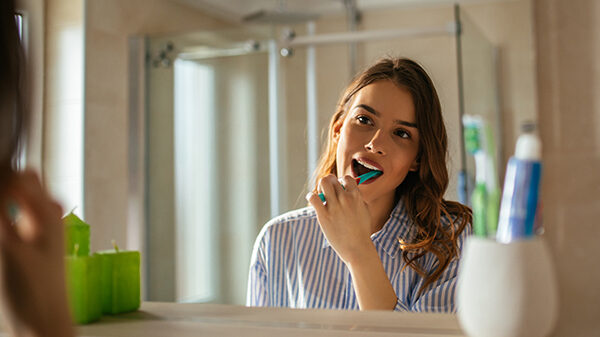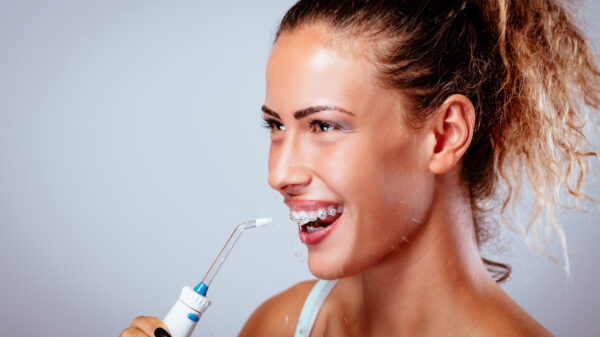Tips for Effective Tooth Brushing
If you are like me, then you probably don’t brush your teeth as often as you should. Maybe the workday is too full, or maybe there are chores to be done around the house that can’t wait. Whatever the reason might be, most of us could benefit from brushing our teeth a little more often throughout the day.
However, there’s a big problem when we do this: we never brush our teeth effectively! Today I am going to share with you some insight into ways to brush effectively, tools you need to take care of your oral health, and warnings of what you should not do with your oral health.
So, how can you brush your teeth effectively? Let me ask you this; how much time do you take to brush your teeth in the morning and the evening? I’m assuming that it takes less than 2 minutes in each session, and if that is the case, then you are doing it wrong!
Back in 2009, the average dentist recommended that their patients brush for a full two minutes. Not only did they recommend brushing twice a day for this time frame, but they also recommended using soft or extra soft bristles and replacing your toothbrush every three months.

Brushing Your Teeth Like a Professional
If you find yourself in this situation, then the only thing left to do is learn how to brush your teeth effectively. Here are some quick tips on how to brush your teeth like a professional:
Brush Back Molars
Always start with your back molars and work your way forward. These are the hardest-to-reach areas of your mouth. Do them first and you will thank yourself later.
Brush Individual Teeth
Be sure to brush each tooth individually. Don’t just move your toothbrush from side to side. Make sure that you focus on one tooth at a time, moving around in small circles until they are all clean.
When you are brushing your teeth, make sure you use a pea-sized amount of toothpaste. More importantly, make sure to brush all surfaces of every tooth and spend enough time brushing to ensure that the paste has adequately covered your teeth.
It takes about two minutes to effectively brush your teeth with fluoride toothpaste. You should brush for 30 seconds and spend an additional time brushing each cheek, the top and bottom of every tooth.
Brush Roof of Mouth
When brushing your molars, also ensure that you are brushing the roof of your mouth. This is especially important for individuals who suffer from toothaches or other problems in their jaw area.
Brushing Pressure
It’s most effective to use the same pressure that you would use if you were trying to remove a sticky candy off of your teeth. Many people make the mistake of thinking that brushing their teeth requires a lot of pressure; this is not the case.
Brush Your Tongue
Don’t forget to brush your tongue! When you are done making sure that all areas of your mouth are clean, make sure to pay attention to the surface of your tongue with light circles. Your mouth will feel like new after doing this.
Brush Gums
Lastly, don’t forget to brush your gums! Some people neglect this area and it results in bad breath and other problems later on.
Now that you know how to brush your teeth effectively, I would recommend setting a timer for two minutes and committing yourself to brush your teeth each day.
It’s a simple way to keep your mouth healthy and smelling fresh. I know it can be tough, but I’m sure that you’ll find time for it throughout the day! Doing this will also ensure that you’re brushing effectively.
Tools Needed To Brush Teeth Effectively
- Manual Toothbrush/Electric Toothbrush
- Mouthwash Containing Fluoride
- Toothpaste Containing Fluoride
- Tongue Cleaner
- Kitchen Timer

Tooth brushing is one of the most important parts of oral hygiene. Brush thoroughly after each meal, and floss daily. Flossing helps to remove food from between your teeth that a toothbrush cannot reach, as well as promotes interdental health. It also decreases gum disease and bad breath.
Here are the tools you should use to brush your teeth:
Electric or Manual Toothbrush
You can choose between battery-operated electric toothbrushes and the standard manual toothbrush, but it is important to regularly replace your toothbrush once every 3 months.
The ideal toothbrush helps you spend the necessary time brushing your teeth effectively, while still reaching every part of your mouth and brushing all surfaces of each tooth.
The bristles should be made from a softer material to prevent damage to the enamel of your teeth. Soft-bristled brushes can clean teeth better than hard-bristled brushes.
A manual toothbrush is a more affordable option, but power toothbrushes can be superior for some people in removing plaque from their teeth. Manual toothbrushes are also better options for people with arthritis or other hand problems that prevent them from using an electric brush effectively.
Toothpaste
Use a pea-sized amount of fluoride toothpaste when brushing teeth. It is recommended that you use toothpaste with fluoride, which can help fight cavities and strengthen your enamel.
Toothpaste with fluoride helps protect your teeth from cavities and helps strengthen the enamel. Fluoride is often included in mouthwashes, but it’s important to brush your teeth with fluoride toothpaste twice per day.
Make sure that you’re not swallowing too much of the paste when you are brushing because that can lead to excessive intake of fluoride which can cause health problems.
Toothbrush Cover
When you are not using your toothbrush, place it in a holder or a cup with a lid to prevent the spread of germs from one user to another. In addition, do not share your toothbrush as it can be a way of transferring germs from one person to another.
Mouth Rinse
Rinse your mouth with fluoride-containing mouthwash 30 minutes after brushing. It is important to use a product that contains fluoride as it can strengthen the enamel and reduce cavities, but make sure not to swallow the mouthwash as it can be harmful.
Tongue Cleaner
Brushing alone cannot remove the food particles stuck in your tongue crevices, so you should use a tongue cleaner to enhance oral hygiene. After brushing, thoroughly clean your tongue with the toothbrush or toothpaste and then rinse your mouth thoroughly. Then brush again with fluoride toothpaste.
The most important thing to remember is that you should brush twice a day for at least two minutes with fluoride toothpaste. It is also important to change your toothbrush every 3-4 months, or sooner if you notice signs of wear such as the bristles fraying or becoming excessively worn down.
If you brush your teeth properly, then you should bring your toothbrush with you to get checked out once every 6 months. If you’re not sure how long it takes to brush your teeth correctly, use a timer of some sort while brushing.
You can use an old-fashioned kitchen timer, a watch with a second hand, or even an alarm clock to time your brushing. Make sure to brush for at least two minutes so you can remove all plaque from the surfaces of your teeth and prevent cavities.

Warnings
Maybe not, according to experts. As much as 75 percent of people do it wrong. Here are some mistakes you might be making when brushing your teeth:
1. Not Using Fluoride Toothpaste
One important component to developing and maintaining healthy teeth is using toothpaste that contains fluoride. Fluoride helps to strengthen the tooth enamel and reduces cavities, especially in children.
2. Not Brushing Long Enough
Studies have shown that more than 50 percent of Americans do not brush their teeth for two minutes or longer – just the minimum time needed to remove plaque and food debris from their teeth.
Brushing for two minutes daily is considered the “golden rule” to effective brushing. For children, parents should brush their kids’ teeth until they can do it themselves.
3. Not Using Proper Technique
In using an up-and-down motion, you only clean 25 percent of the tooth’s surface.
You need to use a circular motion on the chewing surfaces of your teeth. Aside from brushing, you should also floss daily to keep your mouth healthy.
4. Putting Too Much Toothpaste
As mentioned before, people are not using enough toothpaste when brushing their teeth. Only a pea-sized amount of toothpaste is needed for effective brushing.
5. Old Toothbrushes Irritate Gums
Old toothbrushes may still be effective in removing food particles in your mouth, but they can also irritate the gums and cause inflammation in the mouth. This leads to gum disease and other serious oral problems.
6. Forget to Visit the Dentist
You should visit the dentist every six months for a checkup and cleaning. If you want your teeth to stay healthy, see your dentist twice a year for checkups.
Hope you won’t be one of the 75% of people that brush their teeth ineffectively. I trust you will be reminded of the tips, tools, and warnings when you pick up your toothbrush tomorrow.


















